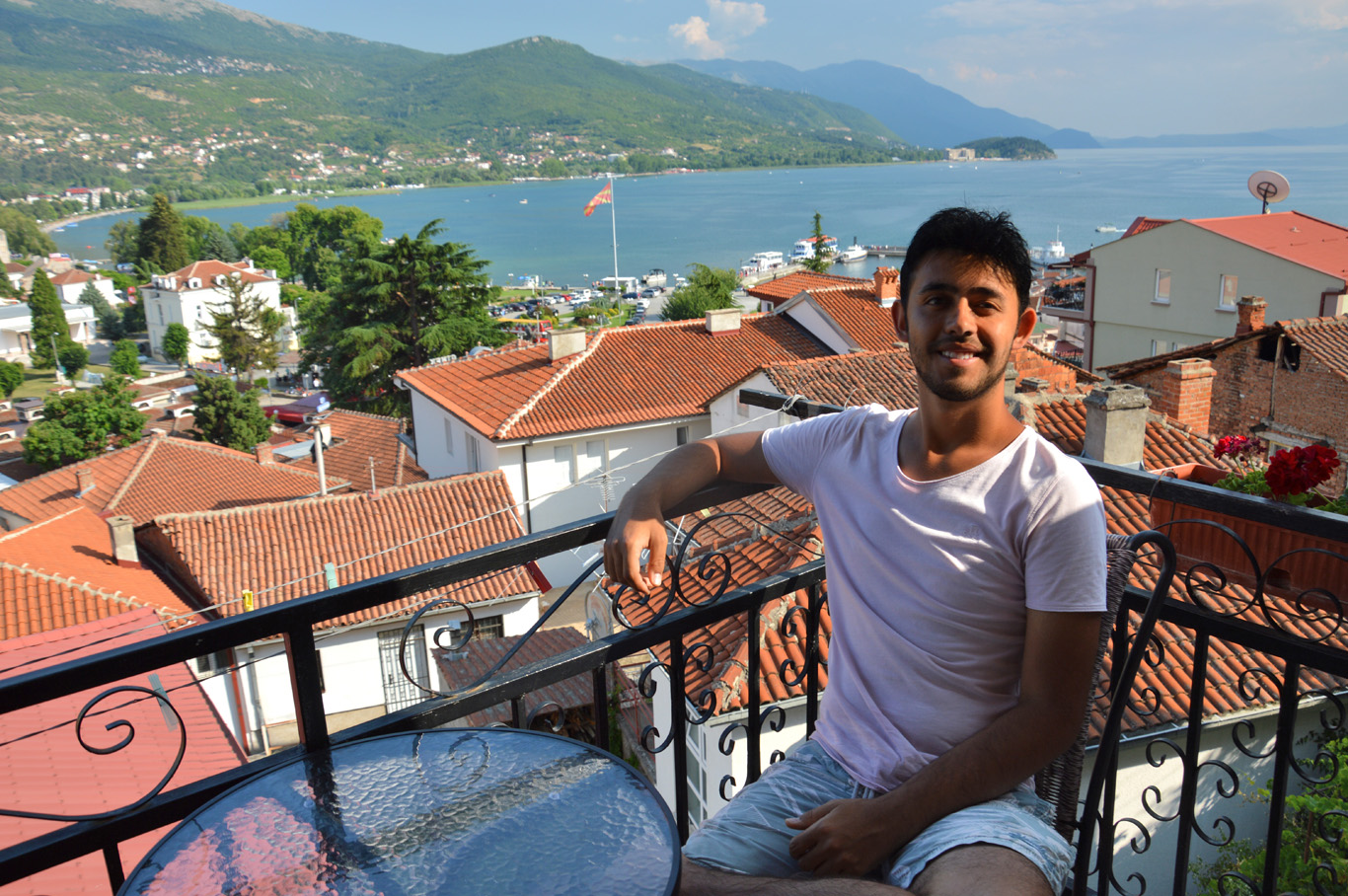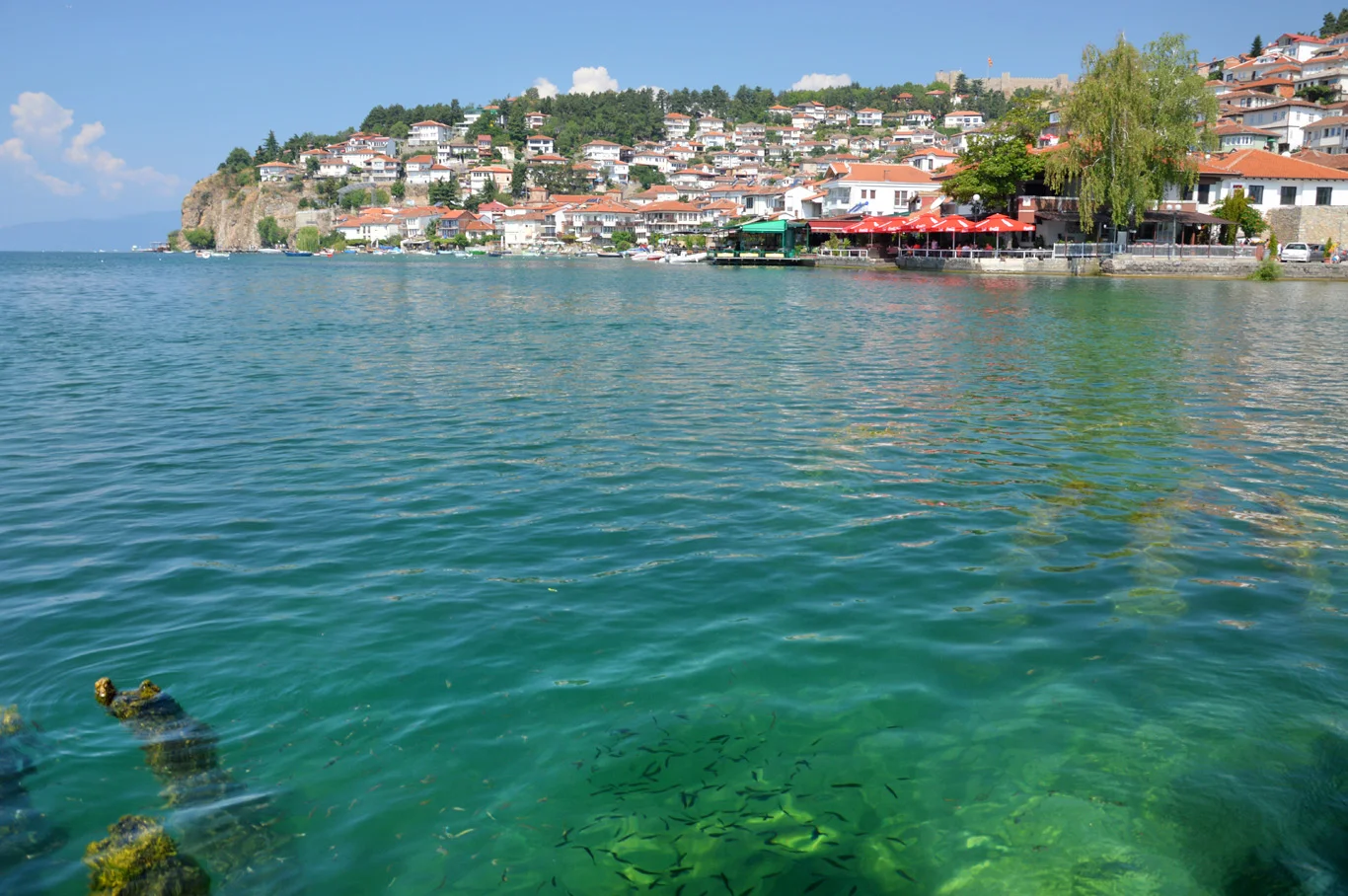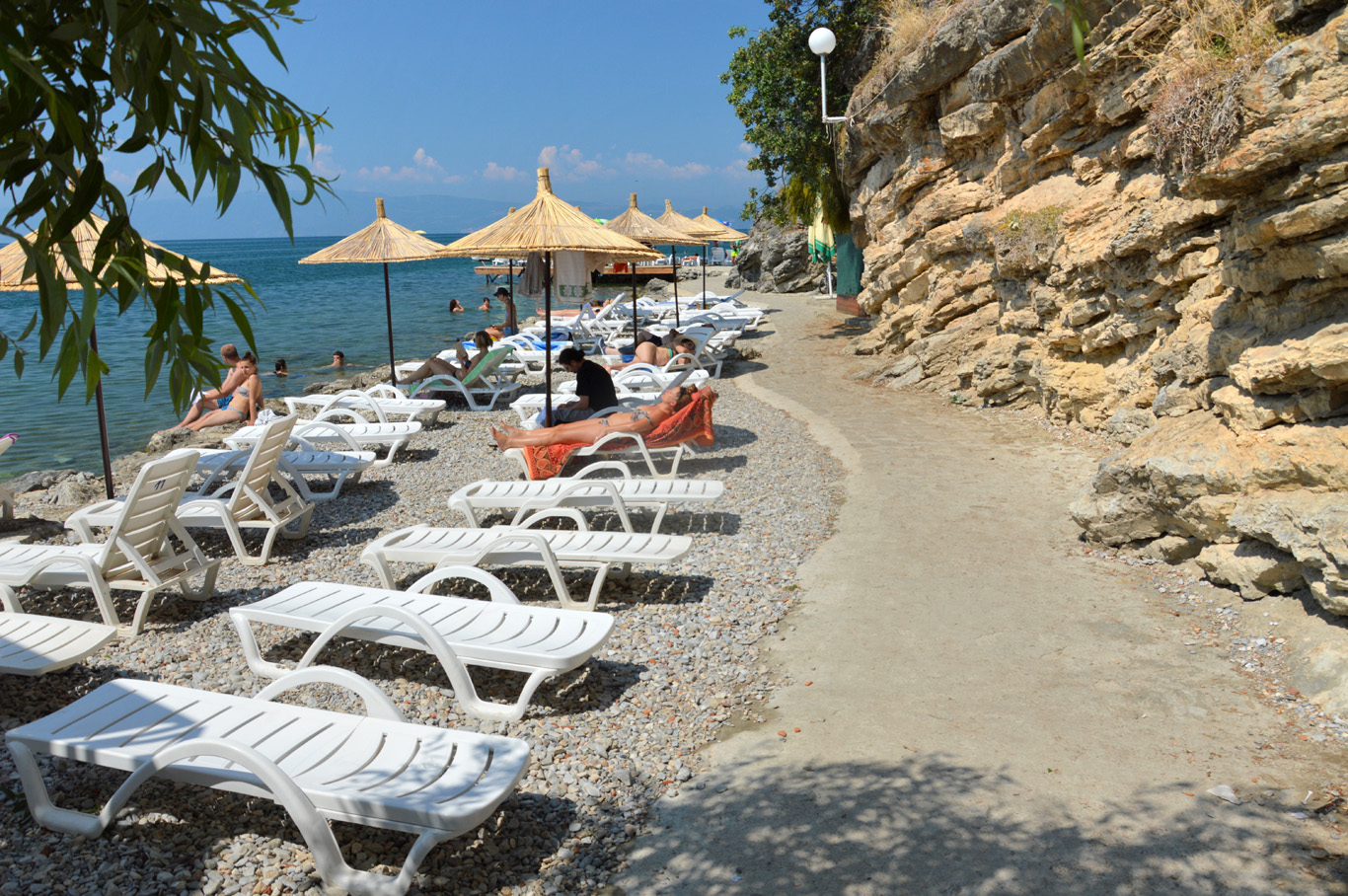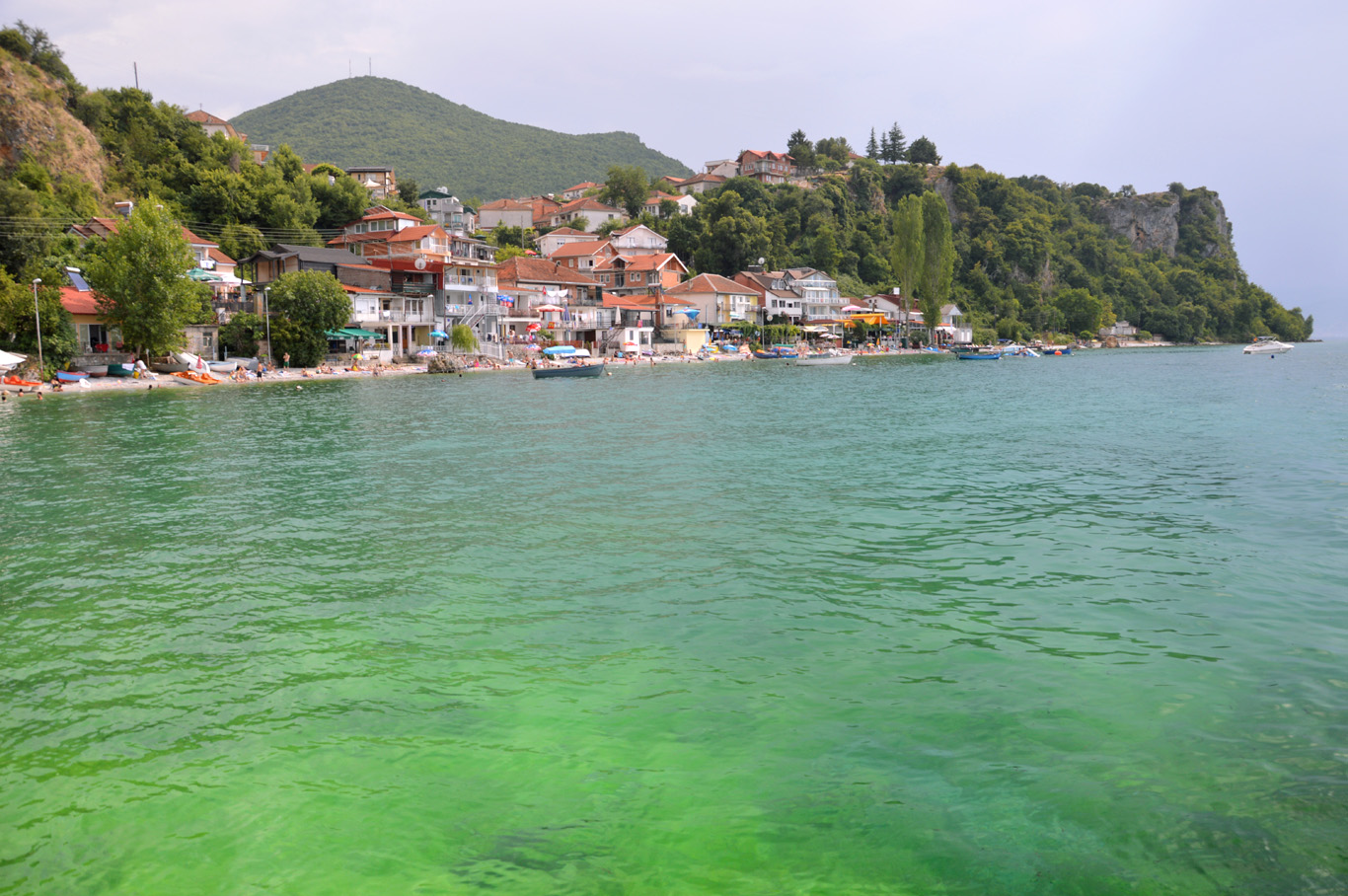Macedonia is a tiny country in the middle of the Balkans. It isn't featured in any articles about tourism and no one knows anything about it. Similarly to its neighbors (Kosovo, Albania), it's left out by holiday makers heading on to Greece. I, however, love to go against the grain and visit those places that are hidden are almost always skipped by ordinary tourists. So, I chose Macedonia! Although I came from the north (all the way from Slovenia), the first place I stayed in Macedonia was the southern town of Ohrid near Albania and Greece. The Balkans are so diverse that every town and every region has its own unique flavor and distinctive architecture. After virtually spotless Slovenia, Macedonia seemed a bit chaotic and messy. But Lake Ohrid enchanted me so much I didn't want to leave.
How to get to Lake Ohrid
It's very easy and cheap to get to Ohrid from all major Macedonian cities. It's also not a problem to get to those cities from Greece/Kosovo/Serbia or Albania. During the high season, there are many buses (hourly) from Skopje, Bitola or Struga. It takes around 4 hours by bus to reach Ohrid from Skopje and it costs around 500 MKD (8.50 EUR/9.60 USD).
Me and my friend came to Ohrid all the way from Belgrade in Serbia on a night bus. We paid around 22 EUR (25 USD) per person from Belgrad to Skopje. I had bought the ticket in Belgrade only to Skopje as I wasn't aware that the very same bus was going all the way down to Ohrid! My intention, initially, had been to change the bus in Skopje but the driver was kind enough to let us pay the difference and stay on board until we reached Ohrid (and he barely spoke English!). Although there are hourly buses from Skopje to Ohrid, you should book it in advance as demand is crazy during the summer season. So we could consider ourselves really lucky with the driver, otherwise we would've had to wait another few hours to be able to catch the next bus with free seats.
You can also fly directly from London and other European cities: Belgrade, Ljubljana, Zurich, Dusseldorf, Vienna and Amsterdam.
First impressions of Ohrid
The bus station in Ohrid and the surroundings are not too appealing to the eye. Old, grey communist era buildings, damaged pavements and chaos. Just like around the station in Skopje. It may seem dodgy and dangerous, but don't worry, it's not! To get to the town of Ohrid and the lake, you'll need to walk around 25 minutes. It's very easy as you'll have to follow only one road. There are no public buses from the Ohrid bus station to the town center so if you don't wish to walk you'll need to take a taxi which shouldn't be too expensive.
The closer you get to the town the nicer it gets. The gloomy concrete blocks gradually give way to the nice original houses, typical of Ottoman heritage. They are unique in this region of Europe, absolutely stunning and very different from anything you'll see in Western Europe. Although the little towns in the Balkans could easily compete with their European counterparts, they are very rarely recommended as a tourist destinations. I wonder why!
Main square in Ohrid
Oriental market in the main square
Fountain in the main square
The communist era buildings
Bazaar in Ohrid
View from the guest house
What to see in Ohrid
Main square
As Ohrid is small, you can see everything simply on foot. I love such small cozy towns with authentic, distinctive architecture and breathtaking natural surroundings. Although at first I thought Ohrid would disappoint me, now I have to admit I enjoyed it a lot, as much as Dubrovnik, Berat, Mostar, Tbilisi or Gjirokaster. It was simply amazing and I'd love to go back!
The main square of Ohrid (built from the 10th century on) has a typical charm of an old Turkish village. Little bazaars, shops, local restaurants and cafes are everywhere. If you want a cheap and good quality meal, eat here! The closer you are to the lake, the more costly it gets. Also, the accommodation is really inexpensive! We got an a nice double en-suite room, with a beautiful view over the lake and air conditioning for 20 EUR (23 USD)! The dinner with a pint of a local beer will cost you around 5 EUR (6 USD)!
Old town
Old town is where you'll see the beautiful Ottoman houses and Byzantine churches at its best. One day is enough to visit it and have a very pleasant walk. (Spend the second day exploring the coast!)
This is the easiest way to see all the attractions in Ohrid: Following the lake's shore, you'll see the harbor and from here, you can admire a beautiful view of the town together with clear waters of the lake. Walking forward, you'll notice the impressive 11th century St. Sophia Church.
Follow the narrow, winding street and you'll end up at the lake's shore with the main beaches, pubs and bars. I wound't recommend to stay here for sunbathing and swimming - read the section "Outside Ohrid", I'll show you my favorite, less crowded and unspoiled beaches.
Now, just climb a few steps and atop a beautiful cliff overlooking the entire lake you'll see Ohrid's main landmark - 13th century St. John Kaneo church. Very near, in the wooded area there is the spectacular archaeological site - locally called Plaoshnik - immensely important place in history: it was here where Cyrillic Alphabet was created and the first European university was established in the 10th century. The most impressive building of Plaoshnik is the 9th century St. Pantelejmon church. There is a minimal fee to enter Plaoshnik, around 2 EUR.
From Plaoshnik, go to the hill with Ohrid Fortifications. The defensive walls existed on the site from 3rd century BC but what you see now dates back to around 10th century and provide excellent views over all sides of Ohrid town. The entry fee is around 1.50 EUR.
From the defensive walls, you'll see the ancient Greek amphitheater. Walk down and visit it! It's free. Nearby, there are most beautiful streets of Ohrid and the 13-th century St. Bogorodica Perivlepta Church. Now you can go back down to the town center, discovering some new little streets on the way.
View from the harbor
Ohrid Old Town
Part of the main gate
Ohrid Old Town
Beautiful architecture
Ohrid Old Town
Old car in front of St. Sophia Church
St. Sophia Church
Along the shore
Beach in Ohrid
St. John Kaneo Church
Lake Ohrid - view from St. John Kaneo Church
Plaoshnik
Defensive walls
Ohrid - view from the defensive walls
Ancient amphitheater
Street in Ohrid
Eastern gate in Ohrid
St. Bogorodica Perivlepta Church
St. Sophia Church - facade
With the view of the old town
Ohrid
Red roofs and Mediterranean atmosphere
Ohrid
Swimming in Ohrid
Ohrid
Outside Ohrid
St. Naum Monastery
The 10th century Monastery of St. Naum is a beautiful place and quite popular among local tourists. Apart from the monastery, you can find beaches, hotels, and stands with souvenirs around. It's a typical touristic area - the monastery itself is amazing but I wouldn't recommend to stay here too long. To get to St. Naum, take a public bus (around 6 daily) from Ohrid - the journey takes around 1 hour. The fare is 100 DMK (1.60 EUR/2 USD).
Best Beaches
Halfway between St. Naum and Ohrid lies the little village of Trpejca. Stop here on the way back from St. Naum monastery. The tiny village is surrounded by cliffs and has incredibly clear water and unspoiled beaches. It's also not as crowded as the other popular places - in the town of Ohrid or at St. Naum. The color of water is turquoise green, absolutely beautiful! So if you love quiet, amazing beaches, spend a day here!
The Monastery of St. Naum
The Monastery of St. Naum
Church in Trpjeca
The village of Trpjeca
Quiet beach at Trpjeca
Trpjeca
Cliffs at Trpjeca
Trpjeca - clear water and Albanian shore in the distance
Trpjeca
If you liked this article, you can also download it via the GPSmyCity app - you will be able to gain access to the guide, which will direct you to all the attractions described above, even if you're offline. Download it here.
Related Posts
Copying without permission is not allowed. If you wish to use any of the site's content (photos or text) or work with us, please contact us.
We welcome questions, advice, support or criticism. However, spam comments will be removed.
















































